40 Years Of Maruti Suzuki: A Visit To The Brand's R&D Centre In Haryana

- Maruti Suzuki has been present in India for over 40 years
- MSIL has a state of the art R&D facility in Rohtak, Haryana
- There are a total of 33 testing tracks at the facility
For over 40 years, the country’s largest carmaker, Maruti Suzuki, has been catering to the ever-evolving needs of the Indian car buyer. Be it changes in Government policies, emission norms or embracing newer technologies, the Indo-Japanese brand has always been able to change its strategies and at most times leading the charge. Over the last decade, the brand's efforts have been towards ensuring faster development of vehicles and being less reliant on Suzuki Japan for efficient testing procedures and overall development of new vehicles. Hence, the state-of-the-art Research and Development centre in Haryana’s Rohtak is the centre of all the action. Team carandbike visited the facility recently to witness first-hand how the vehicles are designed, developed and evaluated, all under one roof.
Also Read: 2022 Maruti Suzuki Grand Vitara: First Impressions
The Electromagnetic Compatibility (EMC) chamber is used to check unwanted electromagnetic disturbances emitted by the vehicle.
This Maruti Suzuki R&D in Rohtak was commissioned back in 2014 and the company has invested almost Rs. 4,000 crore to create testing mechanisms that are safe and stringent at the same time. In all, there are over 250 labs here for various tests, and each vehicle undergoes a huge number of evaluations during design and development which takes anything between 3 and 4 years. According to CV Raman, Chief Technology Officer, Maruti Suzuki, “The vehicles are designed according to future and global automobile trends while also keeping in mind the possible regulatory changes that might happen in the near future”.
Maruti’s R&D centre in Rohtak, Haryana is spread over 600 acres.
The facility is spread over a total area of 600 acres which includes a test track of 400 acres. Being largely a mass market brand, affordability is the key to what Maruti Suzuki does at its R&D centre; developing Auto Gearshift Technology which offers convenience with a small premium on price being one such example. Another aspect is safety with more products now being made by using high tensile and ultra-high tensile steel extensively. These include Suzuki’s TECT Global C-platform on which SUVs like the Grand Vitara and Brezza are based. Remember it is this platform that gave the Vitara Brezza its 4-star Global NCAP safety rating. Then there’s the 5th generation of the popular HEARTECT platform on which smaller cars and MPVs are built.
Powertrain and Drivetrain Testing
The facility has a big powertrain test centre with as many as 30 test beds. Here, everything from engine performance to NVH and reliability testing is done. Low rpm and high torque machines are used for reliability testing whereas drivetrains are tested on benches under extreme temperature conditions to evaluate their durability, efficiency and other parameters. Then there’s the emission efficiency test where non-regulated pollutants are also measured. The aim is that for 1.60 lakh kms emission durability should be available for the consumer. Maruti Suzuki has been working on various types of drivetrains, and the facility can test each one of these. These include MT, AGS, AT, CVT, Hybrid & EV. These are under different vehicle configurations like Front wheel drive, Rear wheel drive, 2WD and 4WD. Tests are conducted to also ensure optimum performance and fuel efficiency of the vehicles. Then there’s gear noise, Clutch as well as torsion testing.
Vehicle Semi-Anechoic Chamber
Welcome to one of quietest rooms in India. One of the key areas of testing a vehicle in this facility is the usage of chassis Dynamometers for the NVH refinement of vehicles. In a vehicle semi-anechoic chamber, design optimization of various sub-systems like powertrain, intake, exhaust is carried out for achieving desired NVH in a vehicle. The dynamometers in these temperature-controlled chambers can attain speeds up to 250 kmph. Exact accuracy in a controlled environment enables measurement of vehicle NVH data eliminating ambient weather conditions. Another semi-anechoic chamber at the facility is the Electromagnetic Compatibility (EMC) testing lab where tests are carried out to check unwanted electromagnetic disturbances emitted by the vehicle. This ensures that no malfunctions occur in the vehicle due to external electromagnetic environment.
NVH refinement tests are carried out in the dedicated Vehicle Semi-Anechoic chamber.
Tyre Coupled Road Load Simulator
You can’t take the car on the test track, well the track comes inside the lab. Here a Uni-axial loading actuator system applies vertical forces up under the 4 wheels of a vehicle and a high-end simulation software reproduces the loads experienced by a vehicle on rough road. This continuously reduces the test time and all the vehicles made by the company can be tested on same machine by changing the mounting points. This is around 30% faster than the actual test on the track, and the aim is indeed that – to get to know of any problem earlier.
Crash Testing
The Big one!! Yes, we were witness to a live crash test during our visit. Full vehicles (in our case the new Brezza), equipped with advanced dummies and myriad sensors, are used to evaluate the protection offered by the vehicle structure, safety components and its interior parts. Tests include Frontal Impact, Side Impact, Pedestrian Impact, Airbag Sensor Calibration, Low Speed Impact & Rear Impact. Maruti says while Bharat NCAP mandates tests to be done at 56 kmph, tests here are carried out at 64 kmph, in line with Global NCAP standards. After the 4-stars Vitara Brezza scored at GNCAP tests, we can’t wait to see how the new-gen fares.
Maruti Suzuki also carries out crash tests in its R&D centre.
Road tests
The actual test track at the facility has a total of 33 different tracks to test various capabilities of newly developed vehicles. This includes a multi-friction track with varying road conditions that is specifically used for brake system performance testing. Apart from this endurance, NVH, braking, Ride & Handling and high-speed testing is also done and here is where we got to sample the new Grand Vitara for a brief while. The idea is that test results should be the same whether they are conducted in Japan or in Rohtak.
The test track at the facility has a total of 33 different tracks to test various capabilities of newly developed vehicles.
There’s lots happening at Maruti Suzuki. While in the mid-term the brand is targeting greener fuels like CNG, work has also begun on flex fuel engines. In the long term the company is looking at more hybrids and electric vehicles. The brand says it is also ready to adopt future tech like ADAS and Advanced human machine interface. The next decade looks promising for sure.
Trending News
 1 min readYamaha YZF-R2 Name Trademarked In India
1 min readYamaha YZF-R2 Name Trademarked In India 1 min readTriumph Tracker 400: In Pictures
1 min readTriumph Tracker 400: In Pictures
Latest News
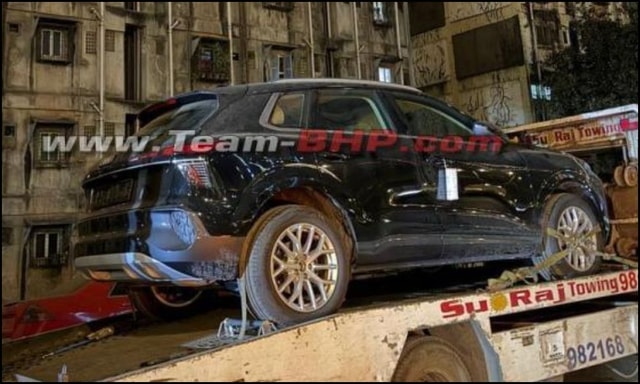 car&bike Team | Dec 19, 2025Next-gen Audi Q3 Spied In India Ahead Of Launch In 2026Third-gen Q3 made its global debut in mid-2025, getting notable tech upgrades and electrified powertrain options.2 mins read
car&bike Team | Dec 19, 2025Next-gen Audi Q3 Spied In India Ahead Of Launch In 2026Third-gen Q3 made its global debut in mid-2025, getting notable tech upgrades and electrified powertrain options.2 mins read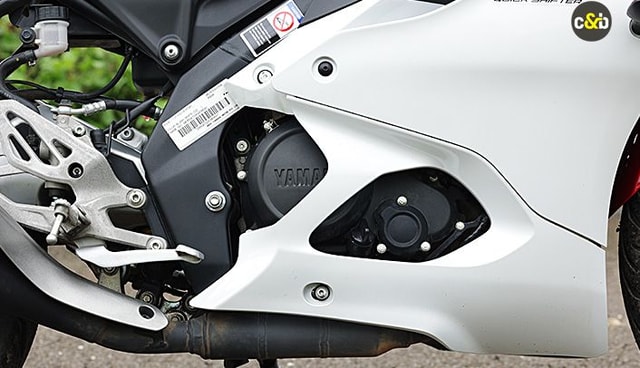 car&bike Team | Dec 19, 2025Yamaha YZF-R2 Name Trademarked In IndiaThe Yamaha R15, one of Yamaha India’s most popular motorcycle models, is likely to continue, even when the R2 finally makes it debut.1 min read
car&bike Team | Dec 19, 2025Yamaha YZF-R2 Name Trademarked In IndiaThe Yamaha R15, one of Yamaha India’s most popular motorcycle models, is likely to continue, even when the R2 finally makes it debut.1 min read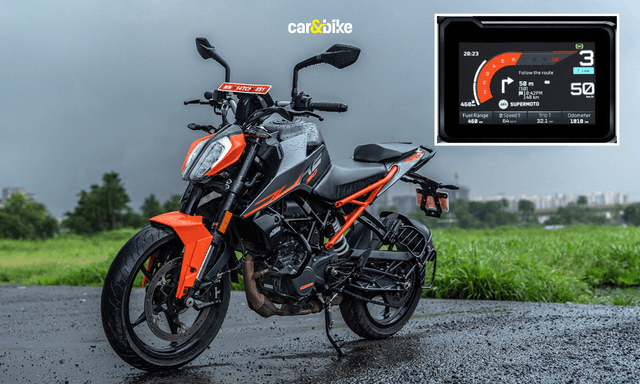 car&bike Team | Dec 18, 2025KTM 160 Duke With TFT Dash launched At Rs 1.79 LakhThe 5-inch colour TFT dash is borrowed from the 390 Duke and is shared across the brand’s sub-400cc lineup.2 mins read
car&bike Team | Dec 18, 2025KTM 160 Duke With TFT Dash launched At Rs 1.79 LakhThe 5-inch colour TFT dash is borrowed from the 390 Duke and is shared across the brand’s sub-400cc lineup.2 mins read car&bike Team | Dec 18, 2025Lamborghini Urus Seized By Cops Following Viral Clip Of Speeding On Bandra-Worli Sea LinkThe car was seized after a video of it allegedly overspeeding on the Bandra–Worli Sea Link, where the speed limit is capped at 80 kmph, went viral.2 mins read
car&bike Team | Dec 18, 2025Lamborghini Urus Seized By Cops Following Viral Clip Of Speeding On Bandra-Worli Sea LinkThe car was seized after a video of it allegedly overspeeding on the Bandra–Worli Sea Link, where the speed limit is capped at 80 kmph, went viral.2 mins read car&bike Team | Dec 18, 20252025 Ducati XDiavel V4 India Launch Details RevealedThe new Ducati XDiavel V4 will be launched towards the end of December 2025 and will sit alongside the standard Ducati Diavel V4.3 mins read
car&bike Team | Dec 18, 20252025 Ducati XDiavel V4 India Launch Details RevealedThe new Ducati XDiavel V4 will be launched towards the end of December 2025 and will sit alongside the standard Ducati Diavel V4.3 mins read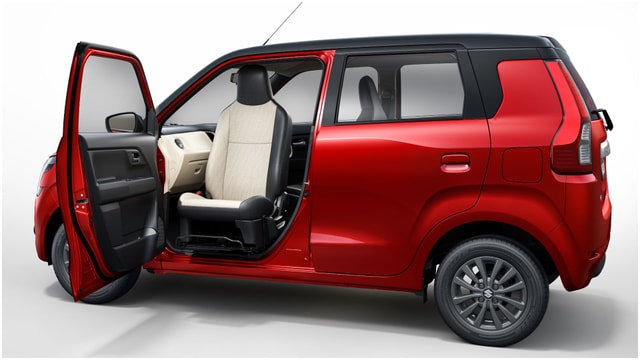 Amaan Ahmed | Dec 18, 2025Maruti WagonR Swivel Front Seat Kit Launched: Check Price, AvailabilityBangalore-based startup TrueAssist Technology Private Limited has developed a mechanism that allows the front passenger seat to swivel outwards, in a bid to improve accessibility for the aged and persons with disabilities.2 mins read
Amaan Ahmed | Dec 18, 2025Maruti WagonR Swivel Front Seat Kit Launched: Check Price, AvailabilityBangalore-based startup TrueAssist Technology Private Limited has developed a mechanism that allows the front passenger seat to swivel outwards, in a bid to improve accessibility for the aged and persons with disabilities.2 mins read
 Bilal Firfiray | Dec 19, 2025Maruti Suzuki e-Vitara Review: Worth The Wait?After a long wait, the first-ever electric Maruti Suzuki is here. It’s the e-Vitara, and it comes with a few promises. But arriving this late, is it worth the wait? Or is it a case of too little, too late?9 mins read
Bilal Firfiray | Dec 19, 2025Maruti Suzuki e-Vitara Review: Worth The Wait?After a long wait, the first-ever electric Maruti Suzuki is here. It’s the e-Vitara, and it comes with a few promises. But arriving this late, is it worth the wait? Or is it a case of too little, too late?9 mins read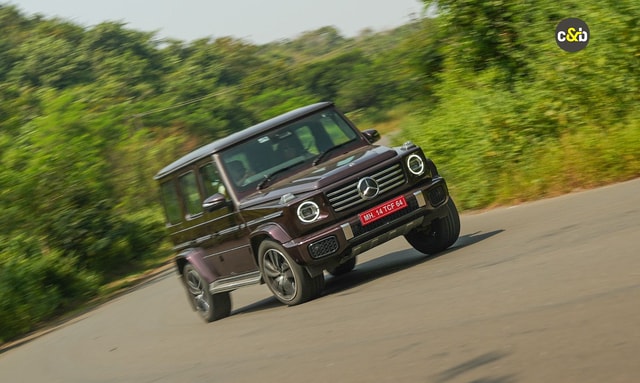 Bilal Firfiray | Dec 18, 2025Mercedes-Benz G450d: The Subtle Power of EvolutionThe Mercedes-Benz G 450d evolves subtly with more power, improved efficiency, and modern tech, while staying true to the timeless G-Class design. And character.4 mins read
Bilal Firfiray | Dec 18, 2025Mercedes-Benz G450d: The Subtle Power of EvolutionThe Mercedes-Benz G 450d evolves subtly with more power, improved efficiency, and modern tech, while staying true to the timeless G-Class design. And character.4 mins read Janak Sorap | Dec 11, 2025Harley-Davidson X440 T First Ride Review: Smarter and SharperHarley-Davidson has taken the X440 and given it a more focused and engaging twist. The result is the X440 T—essentially the same platform but updated in areas that give the motorcycle more appeal and riders more thrill.5 mins read
Janak Sorap | Dec 11, 2025Harley-Davidson X440 T First Ride Review: Smarter and SharperHarley-Davidson has taken the X440 and given it a more focused and engaging twist. The result is the X440 T—essentially the same platform but updated in areas that give the motorcycle more appeal and riders more thrill.5 mins read Shams Raza Naqvi | Dec 10, 20252025 Mini Cooper Convertible Review: More Colour On Indian RoadsThe updated Mini Cooper Convertible is set to be launched in the Indian market in the next few days. We drive it around Jaisalmer for a quick review.5 mins read
Shams Raza Naqvi | Dec 10, 20252025 Mini Cooper Convertible Review: More Colour On Indian RoadsThe updated Mini Cooper Convertible is set to be launched in the Indian market in the next few days. We drive it around Jaisalmer for a quick review.5 mins read Bilal Firfiray | Dec 8, 2025Tata Sierra Review: India’s New Favourite?Marking its return after a few decades, the reborn Sierra has made everyone sit up and take notice. But is it worth the hype?10 mins read
Bilal Firfiray | Dec 8, 2025Tata Sierra Review: India’s New Favourite?Marking its return after a few decades, the reborn Sierra has made everyone sit up and take notice. But is it worth the hype?10 mins read





























































































































